Shade Garden Design Ideas (How To Design A Stunning Shade Garden–With Pictures)
There's something about strolling along a path in a shady garden during the middle of summer that makes you want to sit down and relax. Which is why I have finally decided to do something with the bare spot in the back corner of my yard. And these shade garden design ideas are providing the inspiration to get the project done.
I think this may be the year.
The year that I actually get around to turning the empty back corner of my yard into a proper shade garden.
It is definitely shady (my house backs onto a ravine). And I've been planning on doing something with it for a really long time.
So I started looking for shade garden design ideas and pictures that I could use as inspiration.
And came up with a plan for how to create a shade garden.
1 | Design The Shade Garden Structure
Before you start picking your plants, it's a good idea to figure out what your shade garden design is going to look like.
Create Curved Garden Beds
Since shade gardens tend to feel like a calming, woodland retreat, they often have a more natural look to them.
Which is why creating curved garden beds seems to go so well (you don't see too many square edges in a forest).
They also hide part of the garden from view, which makes you want to walk around the corner to see what you're missing.
Use a hose to outline the edge of where your garden bed. That will make it easier to create a natural-looking curvy shape.
Or Go Formal With Hedges
Having said that, it is also possible to create a more formal shade garden, if that's the look you like.
Boxwood hedges grow very well in the shade.
And make the perfect edging for square garden beds containing other plants that are happy with less sun light.
Add Garden Paths
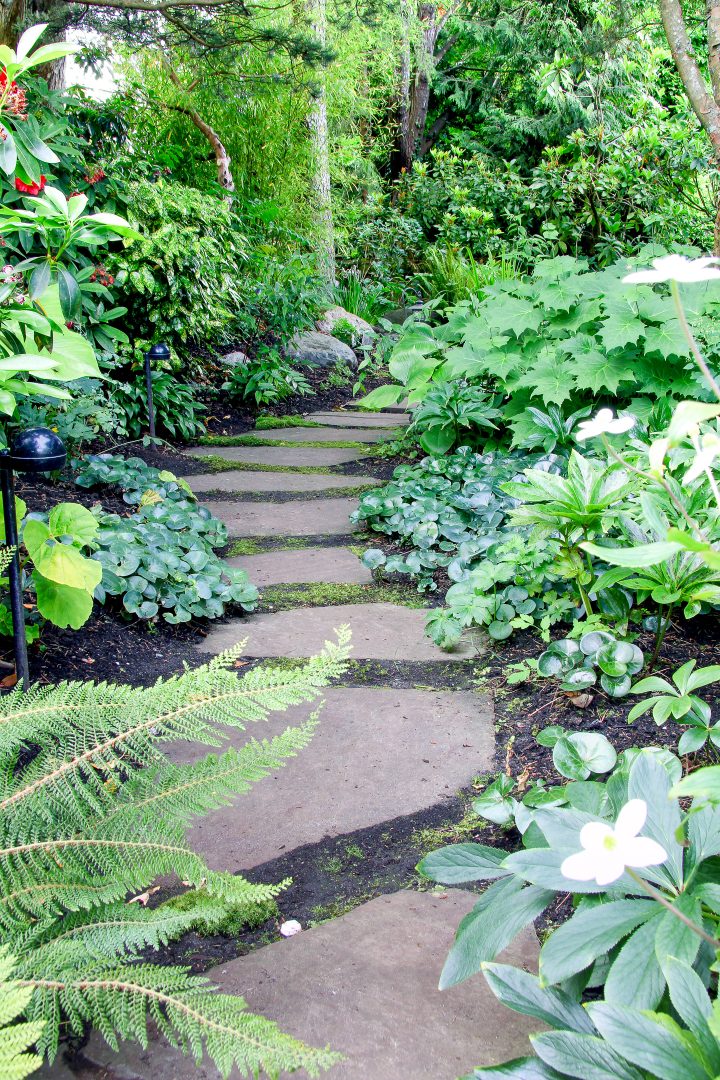
Once you have your garden bed shape, it's time to put in some paths.
These lead your eyes (and your feet) in the direction you want them to go.
And if you can't see the end of the path from the beginning, you'll really make people want to walk down it…just to see where it goes…
Find some ideas for different types of garden paths HERE.
Create A Place To Relax

If you are going to put in all the work of creating a stunning shade garden, you might as well enjoy it.
Adding a bench, installing a small patio or deck, or hanging a hammock will give you a place to stop and enjoy the serenity.
It also makes a destination in your garden which feels like a secret outdoor room…and is a good ending point for your path.
For more secret garden design ideas, click HERE.
Install Some Rocks
Natural looking boulders and rocks add some structure to your garden.
Use rocks of different sizes to create a retaining wall (like the one above) which would be particularly effective for a hillside shade garden.
Or stack small flagstones to create a raised bed.
Keep them from seeming out of place by growing plants over the top of them and in the crevices.
Avoid big rocks that stick out of the ground with nothing around them. It will be very hard to make them look like they are meant to be.
2 | Create Plant Layers
To create the beautiful, lush look that most people associated with shade garden designs, you'll need to plant your garden beds in layers.
Pick Shrubs For The Backbone
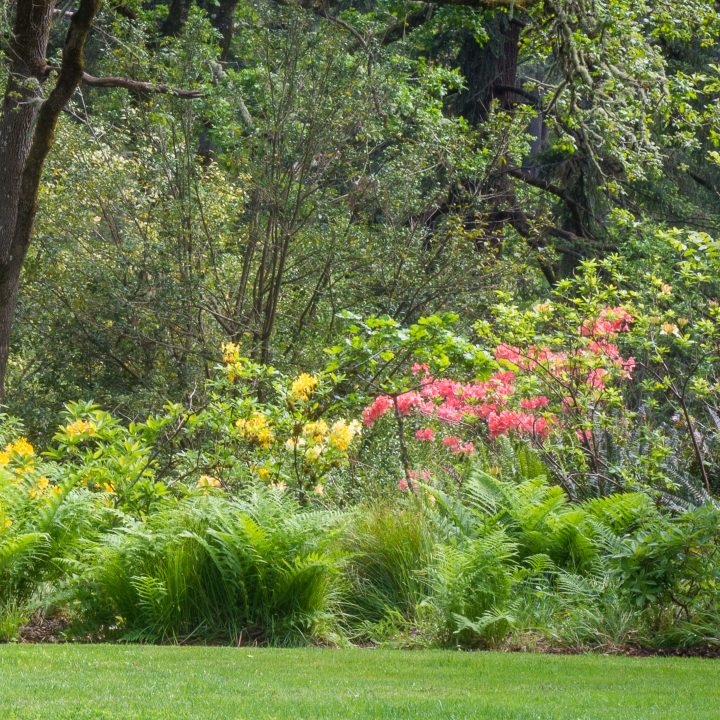
The first step to creating a layered shade garden is to include some taller shrubs as the backbone of the garden.
These provide the structure that fills in the garden even in the winter. Which is why I like to use a lot of evergreens for this layer.
Fortunately, there are a lot of evergreen bushes that grow in the shade, so you have quite a few options to choose from.
Find some shade-loving shrub suggestions HERE.
Add Height With Vines
Including vines in your shade garden design is a great way to bridge the gap between the bushes and the taller trees.
Plan to add structures such as trellises or posts that give the vines a place to grow.
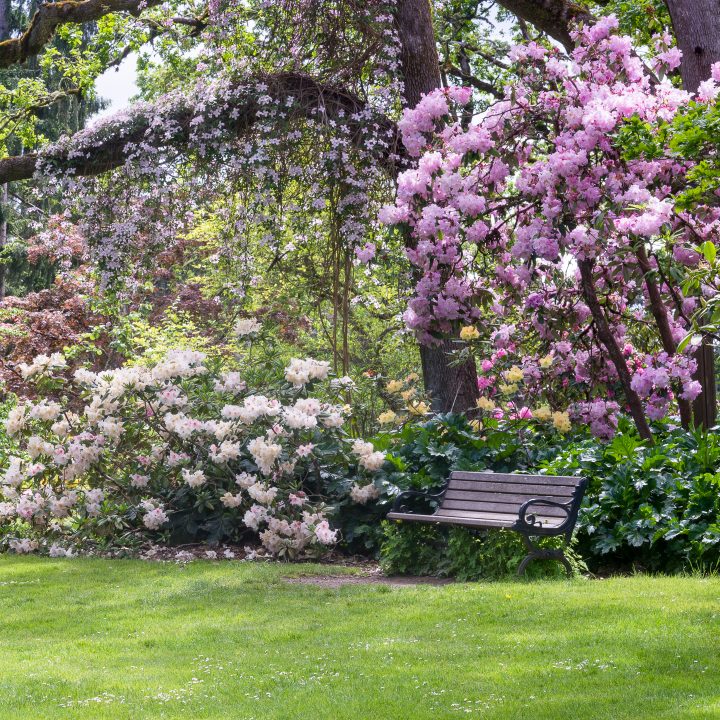
Or for a really natural look, let them grow up into the bushes and trees. (Just make sure the vine isn't invasive or it might take over everything.)
For some shade-loving vine ideas, click HERE.
Include Taller Perennials
The next layer contains taller perennials and low-growing shrubs.
These fill in around the base of the bushes and trees.
And add some extra color and texture to the garden beds.
Find suggestions for taller perennials that bloom in the shade HERE.
Use Lots Of Ground Cover
Finally, fill in the bottom layer with ground cover plants…and lots of them.
The idea is that eventually the ground should be completely covered with plants.
This adds to that lush, shade-garden feeling, keeps moisture in the soil longer, and helps to keep the weeds to a minimum (which means less maintenance…always a bonus!)
Find shade-loving ground cover plants HERE.
Fill In With Mulch
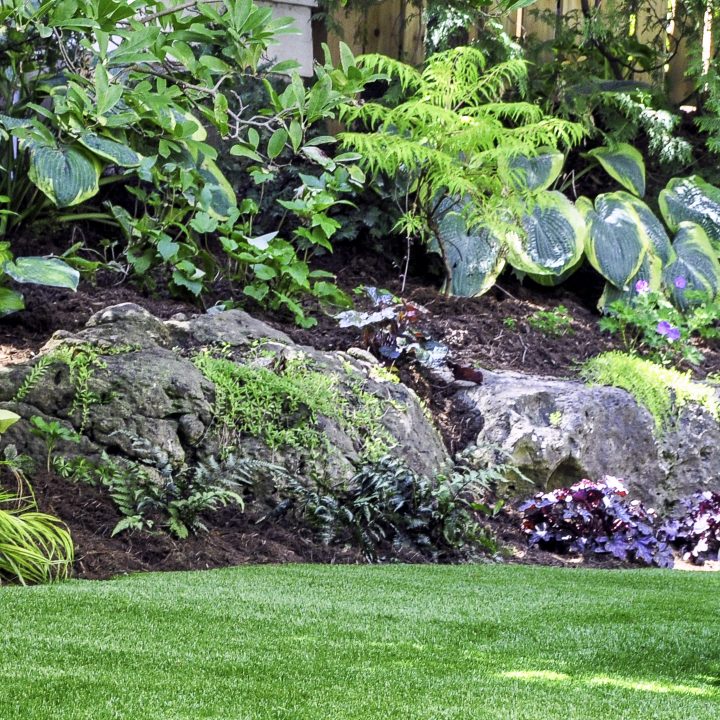
Fill in any gaps between your plants with mulch.
I like to use double-ground hardwood mulch for this. (The natural kind that doesn't have any color or chemicals added to it).
It fits with the shade garden feel and improves the quality of the soil as it decomposes.
3 | Choose Some Shade Plants
Here are a few guidelines to use when you are picking out your plants.
Click here for more suggestions on how to create plant combinations that work well together.
Pick Plants With Colorful Leaves
The great thing about shade plants is that so many of them have vibrant leaf colors.
Which means you can have color in your garden all season, even if none of your plants are blooming.
And I will definitely try to take advantage of this in my shade garden design.
Add Interesting Textures
Varying the leaf textures is another way to add interest to your shade garden.
The contrast between delicate fern leaves and monster-sized Hosta leaves makes this small shady garden bed look like a tropical oasis…even though it's actually growing on Mackinac Island (in Northern Michigan).
Include Pops Of Color
Of course, you'll also want to include some flowering plants that add pops of color to your shade garden.
Picking a color scheme will help to create a cohesive, unified look (get help with that HERE).
Try to include plants that bloom at different times so you can have blooms all season long.
Repetition Is Key
One of the keys to creating a garden that looks serene (and not like a jumbled mess) is to repeat the same plants multiple times throughout your garden beds.
Try alternating two different kinds of plants all along the edge of the bed. Or include a mass planting of just one variety.
The picture above uses both of these techniques to create a simple but effective shady border garden in front of the house.
4 | Add The Finishing Touches
Now your shade garden is almost complete! Time to add the finishing touches.
Fill Gaps With Annuals
You may find that there are some gaps in your garden, especially when it is first getting started.
If you want the lush look right away, fill in the gaps with shade-loving annuals like impatiens and begonias.
They'll grow quickly to cover the spaces and provide extra color.
Incorporate Containers
Adding planters into your shade garden design is another easy way to fill in the gaps.
Putting them right in the garden beds (rather than on a patio or pathway) adds some extra height and interest because it's a little unexpected.
If you've been around here for a while, you know I have a thing for blue. So I often plant blue flowering plants (see our favorites HERE) in blue containers.
Add Garden Art
Garden art (like statues or fountains) is another way to add the element of surprise to your shade garden design.
It also gives you the opportunity to include your own creativity and style in the garden. So be sure to choose pieces you love!
Try not to use art that is too small. Tiny art pieces don't make much of an impression compared to the height of the trees, and can look out of proportion.
Put Down Fake Grass
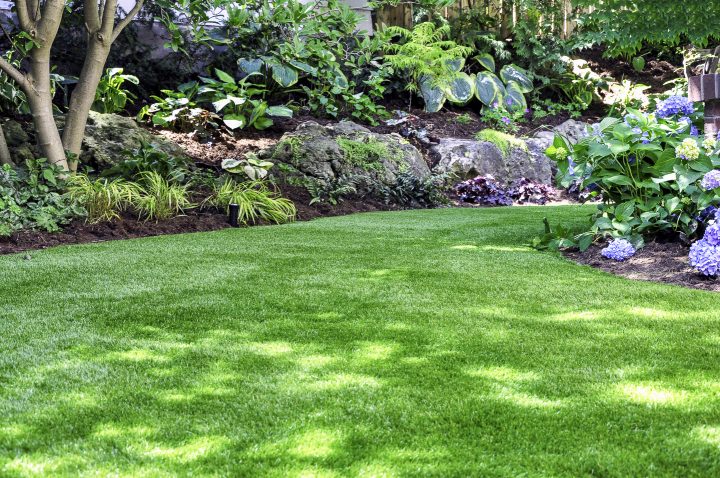
This last suggestion may be a little controversial…but it is becoming a more popular option these days.
Generally speaking, grass doesn't grow well in the shade.
So if you want a lush-looking lawn as part of your shade garden design, you might want to consider installing fake grass.
Good quality newer varieties look and feel very much like real grass, without all the maintenance.
No watering. No weeds. And it looks great all year round. I may have to try this out!
Other Shade Garden Tips You Might Like
Have comments or questions about our shade garden design ideas? Tell us in the section below.
Pin It So You Don't Forget It!
This post was originally published on February 14, 2020 but was updated with new content on November 23, 2024.

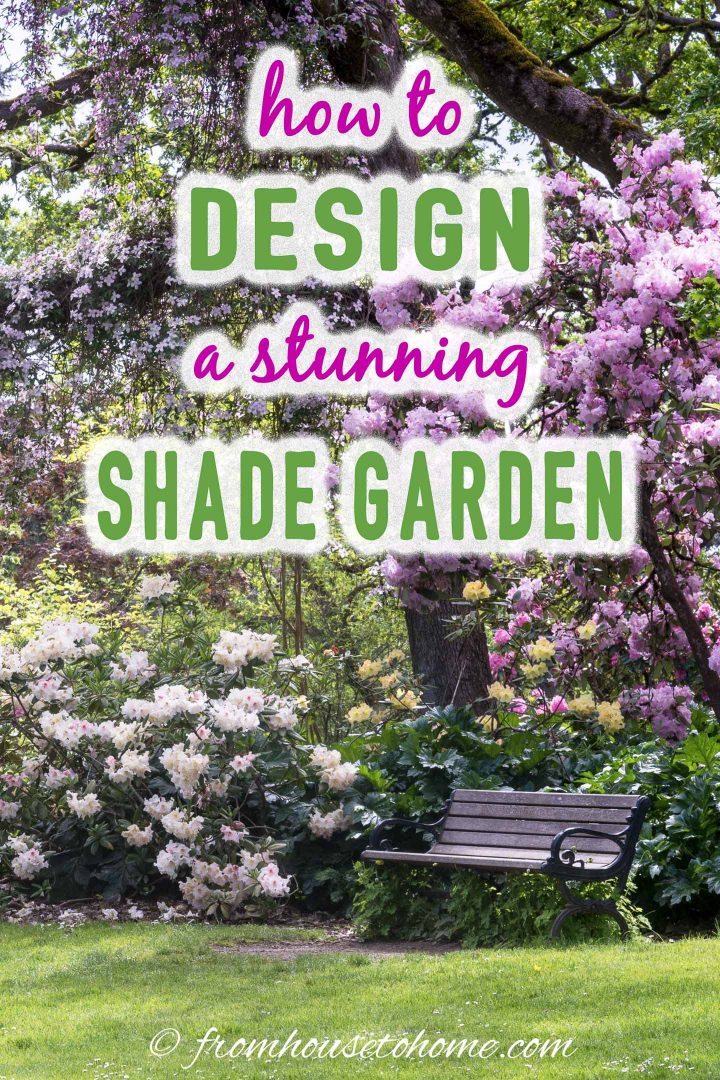

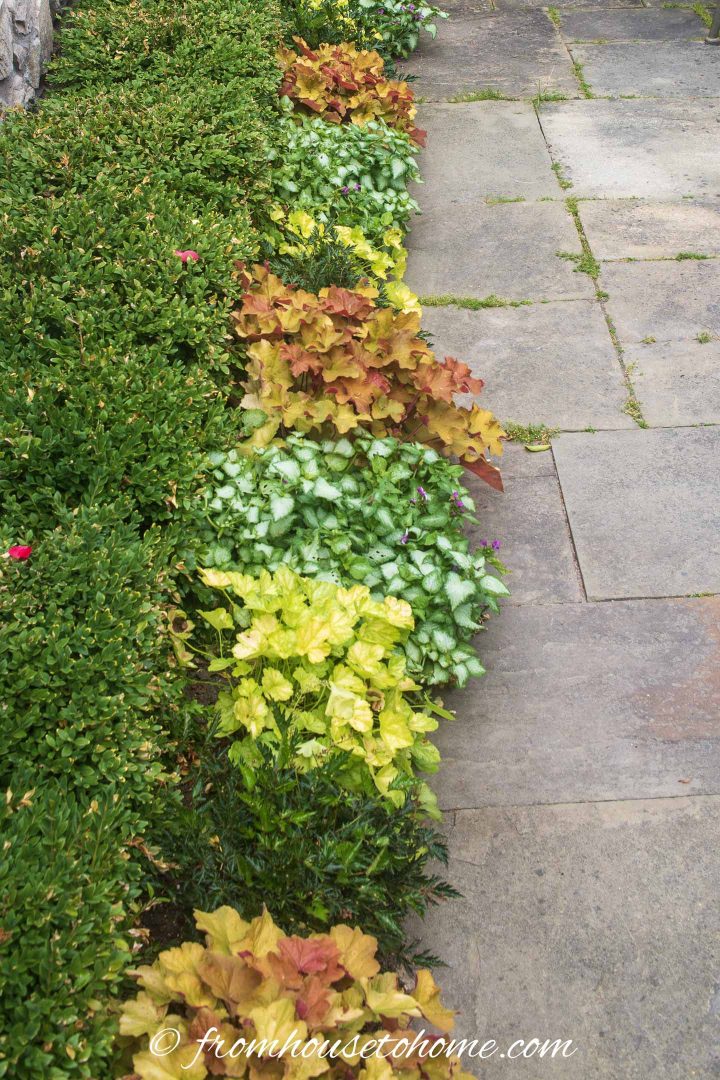
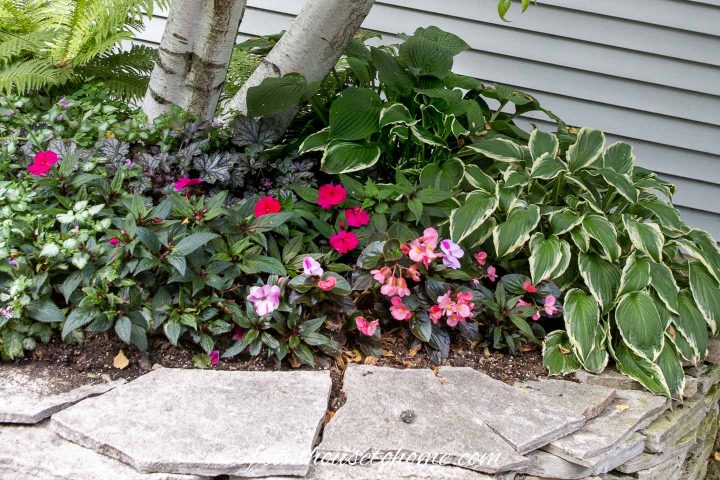
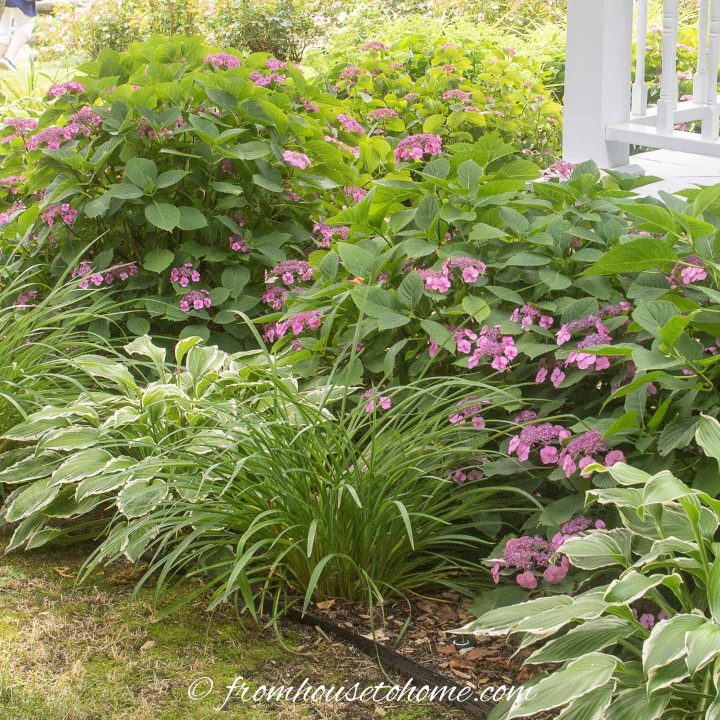
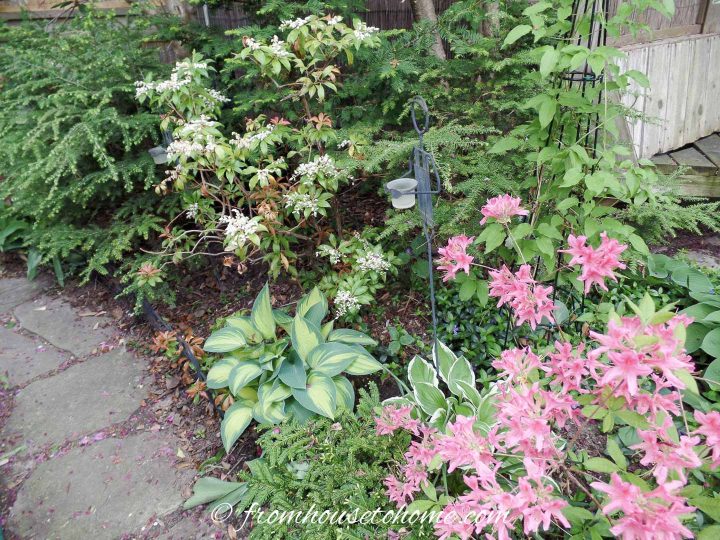
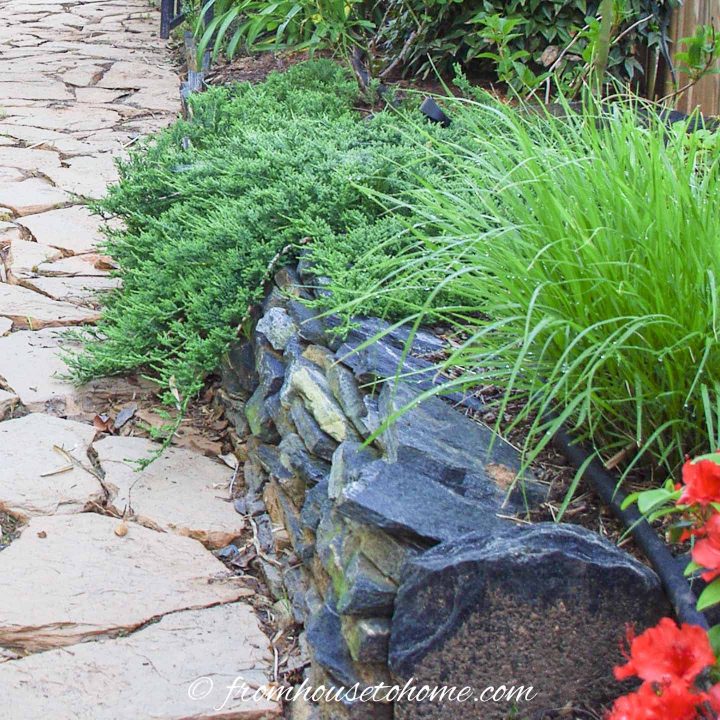
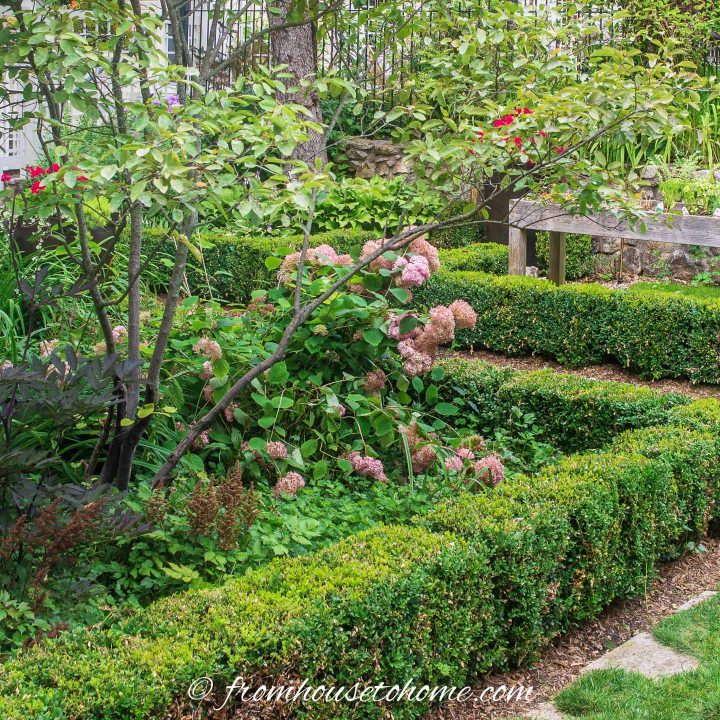

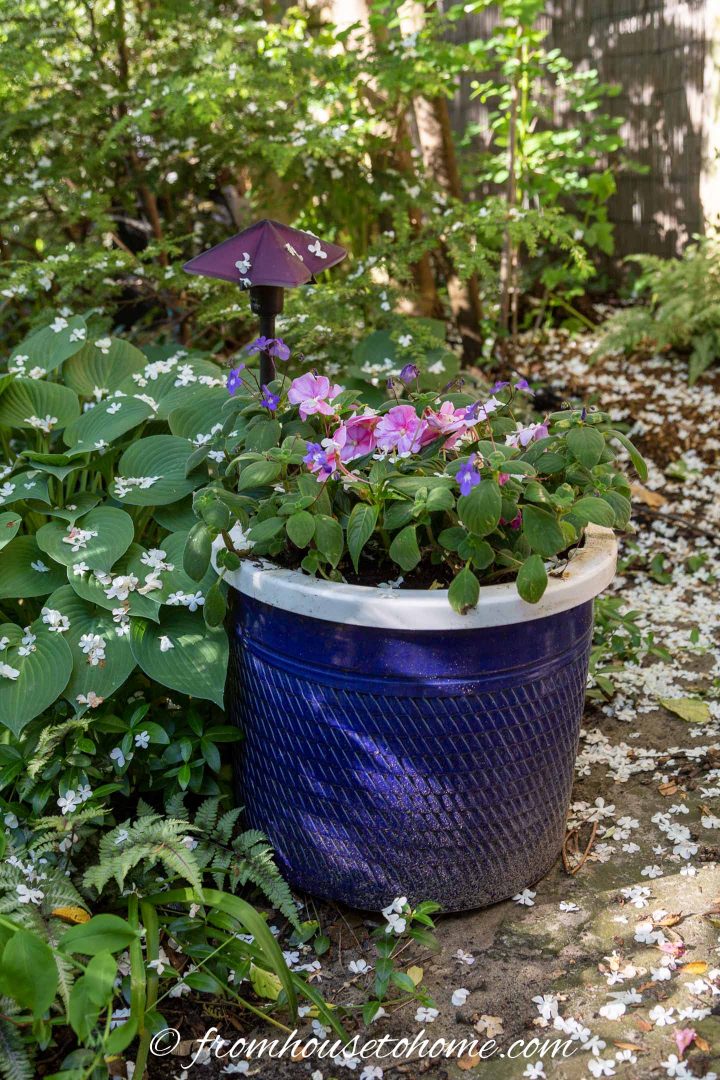
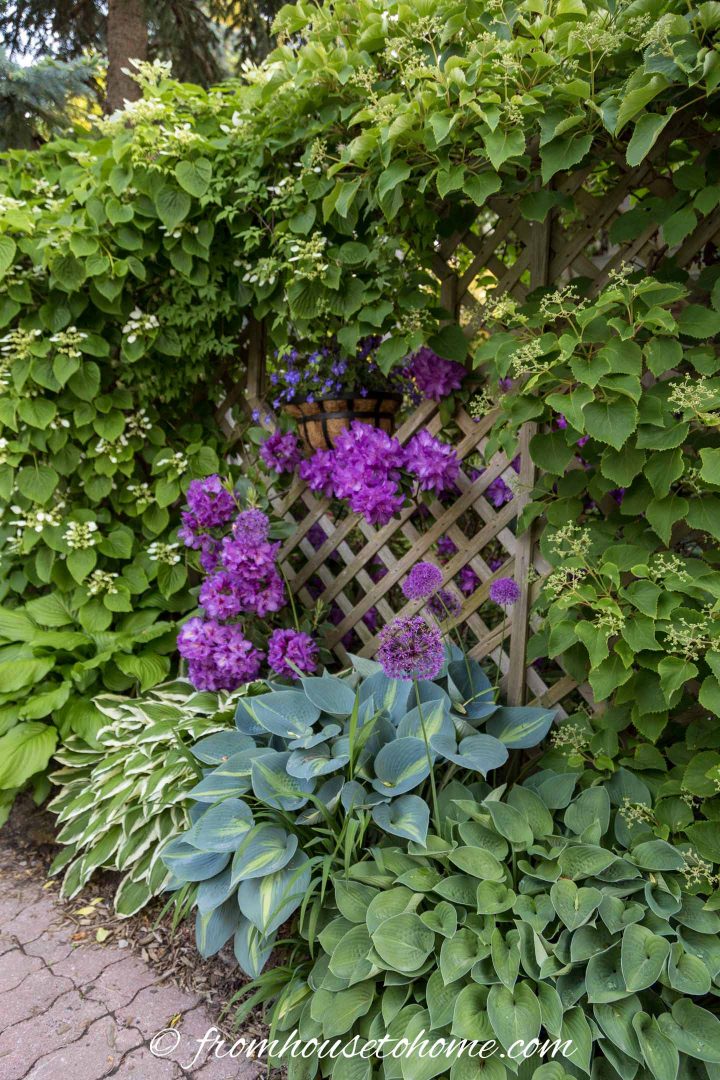
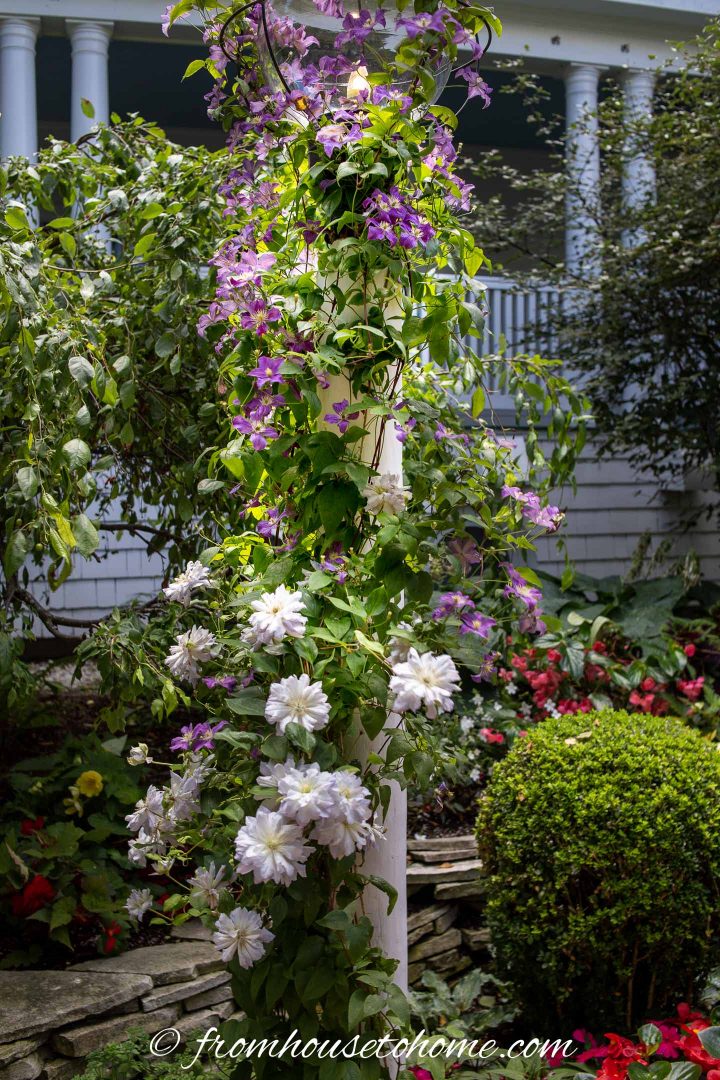







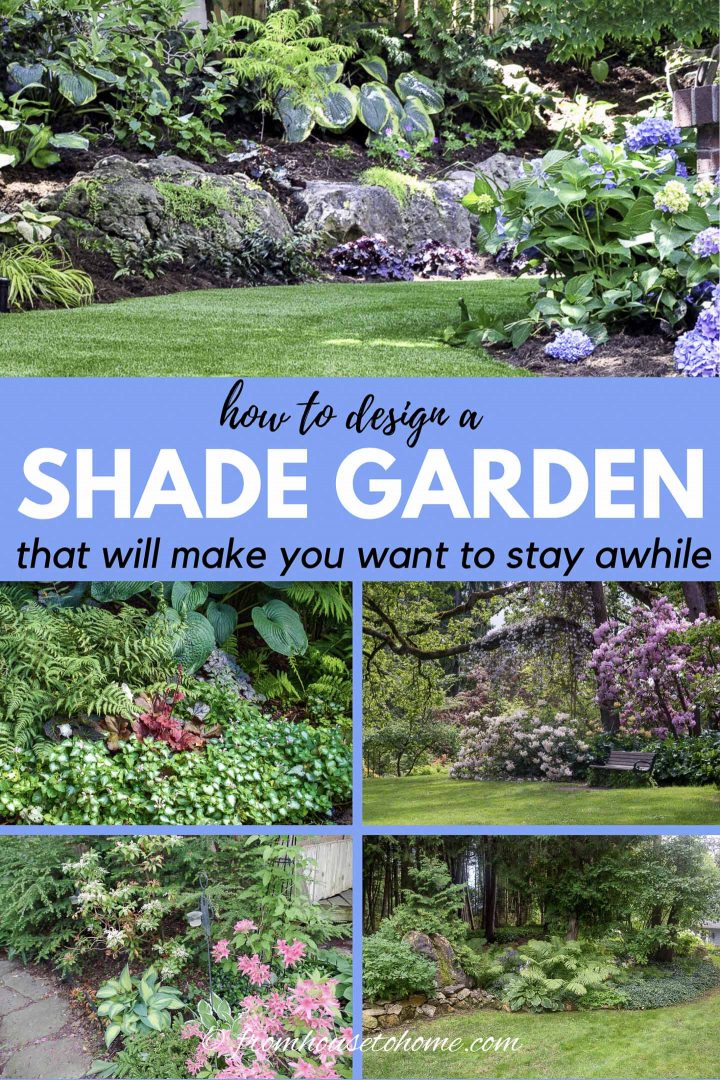
























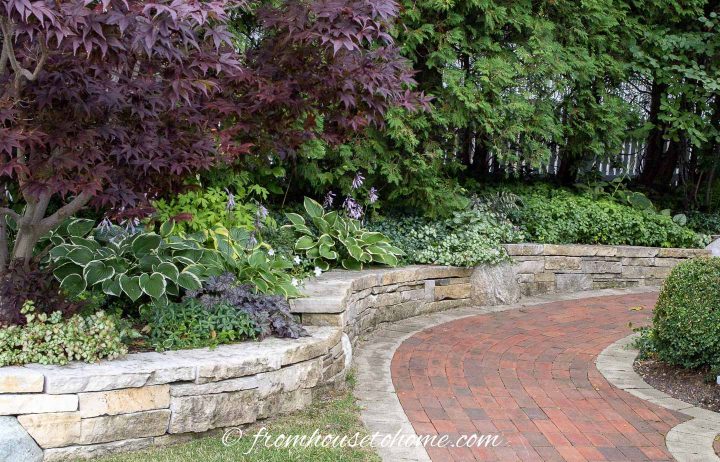
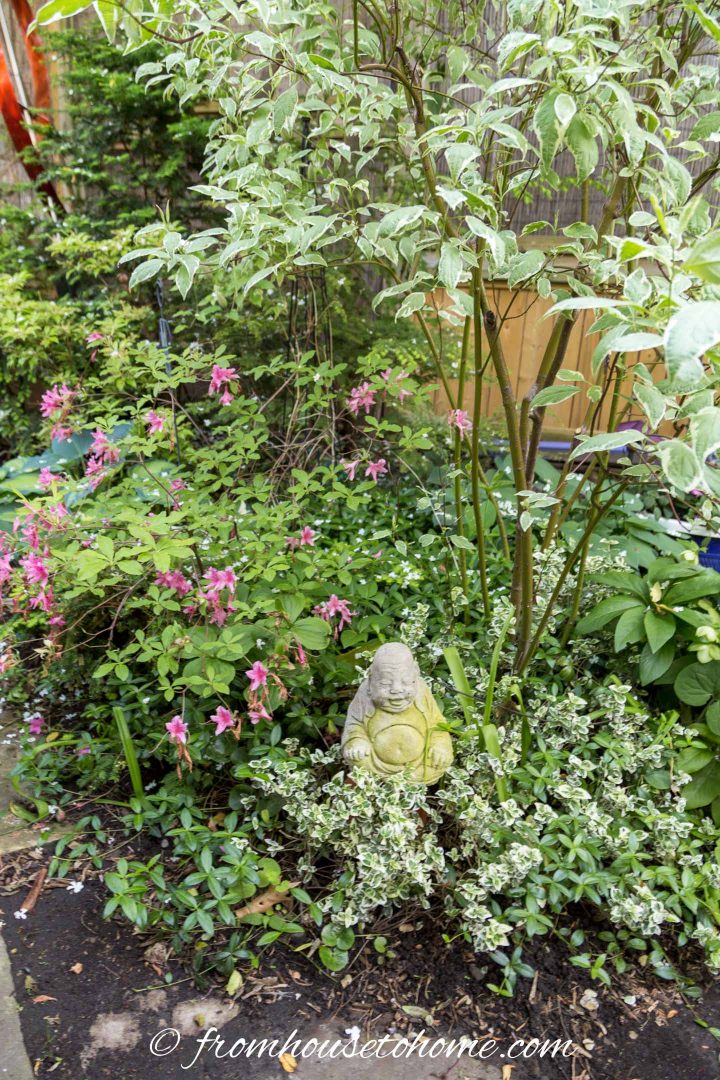
Hi Wanda, you describe it very well and I really like your concept. Lots of love for you
Thanks, Cynthia!
I just love all your information on shade On shade gardens. I have a few shade beds and the information you provided is helpful.
Thank you! Colleen
Thanks, Colleen! I’m happy you found it helpful 🙂
What about watering? I have no irrigation set up on my shady side yard.
Hi Christine…I use soaker hoses to water all of my garden beds. If you want to see how I set them up, you can read about it here.
I’m about to build a brick planter in my backyard in a spot that doesn’t really get hit directly by sun at all. The backyard itself is sunny, but the corner where the planter is in southeast corner and blocked by neighbors’ fences (I’m in Brooklyn). Can I plant something nice or should I scrap that corner completely. So torn, It’s a small space that’s why I wanted it back there…..
Hi Cindy…there are quite a few plants that will grow in full shade so I wouldn’t give up on that corner yet. When you’re buying plants, make sure the label says they can take full shade. You can get some ideas from our list of plants for shade.
Wow, thanks. I already blew up the whole backyard plan and moved everything around to put the smokers in the shady corner and the flowers in the sun. I still have some shady parts on the other side and I’m going to use some of your recommendations for sure!
What a beautiful garden and fantastic ideas! Thank you for sharing!
Thanks, Bonnie! I’m glad you liked it 🙂
Best ideas I’ve ever seen, thank you so much! You have a new follower.
Thanks, Judith! I’m happy you found it helpful 🙂